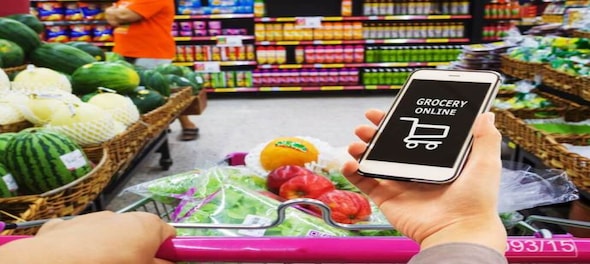
The new mantra is “we have to learn to live with the virus”. Faced with this reality, countries around the world are relaxing their strict lockdown conditions and hoping that economic activity and business will gradually pick steam. As it happens, businesses are eagerly exploring how consumer behaviour is going to change after strict lockdown. What trends will emerge going forward as the shackles gradually come off?
Consumers differ across and within countries. For instance, a recent Mckinsey study finds that consumers in India and China remain more optimistic about the prospects of economic recovery than the rest of the world. Each country differs in terms of its financial strength, COVID induced economic stimulus, health and social security safeguards and its consumption culture. And yet, for the foreseeable future, consumers across the world will continue to fear the virus, restrict their movements and sense uncertainty about their economic prospects. Given these differences and similarities, the consumer behaviour trends may be both common to countries and specific to them. Let us consider how the middle-income consumers in India may behave and act in days to come.
Less Physical, More Digital
Where possible consumption will move from the brick and mortar models to online. Digital consumption of retail products, medicine, media & entertainment and education saw phenomenal growth during the lockdown and with the threat of virus looming large, consumers are likely to stay with this medium. Even, if the virus were to suddenly disappear or a vaccine were to emerge, the e-consumption habits may be here to stay for many. The lockdown accelerated the shift of consumers towards digital shopping.
Self-Conceit Driven Consumption
Lockdown induced isolation and prolonged co-habitation was a psychological dampener for many. Consumers would like to pamper themselves with products with a strong feel-good, I love myself component. This will drive demand for personal care, grooming and beauty products. For many Indians, their regular maids will not be an option as yet. Thus, products helping with those self-debasing household chores - vacuum cleaners and dishwashers - would now make perfect sense.
Stronger Risk Aversion
According to Nobel laureates Kahneman and Tversky, losses are perceived more hurtful than the pleasure we get from gains. With uncertainty and income erosion, the hurt from a loss will sting even more than in pre-COVID times. Thus, many consumers will shift towards safer options - a Fixed Deposit over Mutual Funds, Mutual Funds over Equity, and so on.
Trading Down, despite Brand Longing
A big segment of customers who are facing loss of incomes, jobs and uncertainty, may economise on their consumption by trading down from their favourite brands. The trading down phenomena is likely to be more visible in case of consumer goods, especially FMCG products which have a lower but regular financial outlay. However, with greater financial stability, the consumers will return to their loved brands.
Women, the Key Decision Makers
Like it or not, in the middle-income India, it is women who run the households and keep tab on regular expenses. With incomes under stress and uncertain economic future, the woman in the household will have a more significant voice in the family’s consumption decisions. They will assert themselves more than ever before in shaping the consumption decisions of the family.
Rent it or Lease it, Rather than Buying it
Persistent economic uncertainty will make consumers prefer renting or leasing a high-value product rather than buying it outright. This will be evident in the case of real estate, automobiles and high-value durables. Such a preference will be further helped by falling interest rates.
Preference for Larger Unit Sizes for Daily Essentials
Whether they purchase their essentials in store or online, consumers will tend to prefer larger unit sizes than before: say, bigger packet of their favourite noodles or tea-time biscuit. This will help them to reduce the number of trips to the offline retail store and minimise their contact with online delivery staff. Larger units will also provide a psychological hedge against possible supply disruptions, which may be more feared than real. That being said, the segment of lower-income consumers including daily earners who may have lost their livelihoods, may prefer smaller unit sizes or sachets over the normal-sized units.
Conclusion
With these likely changes in consumer behaviour, it is now up to the business managers and companies to bring in solutions that fit with the new reality. An offline retailer or an educational institute should look to develop its digital capability; an e-commerce player has to plan ahead for a higher volume of customer transactions; a financial institution needs to develop attractive instruments to address consumers’ lower risk appetite; an automaker should think about introducing quality lease and rental options; food and grocery players may have to innovate with different unit sizes; pharma companies may gain from stronger partnerships with telemedicine players and so on. Businesses that best adapt to the changing consumer behaviour will have the first laugh after a long period of gloom.
-Nimish Rustagi has a PhD in Marketing from HEC Paris. He is a civil servant and the views expressed are personal.
Check out our in-depth Market Coverage, Business News & get real-time Stock Market Updates on CNBC-TV18. Also, Watch our channels CNBC-TV18, CNBC Awaaz and CNBC Bajar Live on-the-go!


In Ayodhya, voters talk of a promise fulfilled and yearning for development
May 17, 2024 2:10 PM
Fight of heavyweights in Sambalpur where farmers, weavers hold the key
May 17, 2024 12:25 PM
Odisha: Fight of heavyweights in Sambalpur where farmers, weavers hold the key
May 17, 2024 10:22 AM
Lok Sabha Election 2024: What rural Delhi wants
May 16, 2024 10:10 PM

